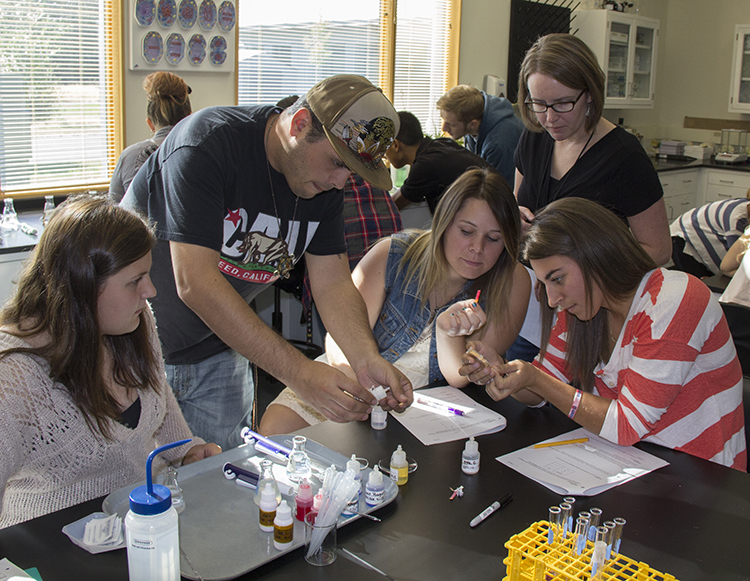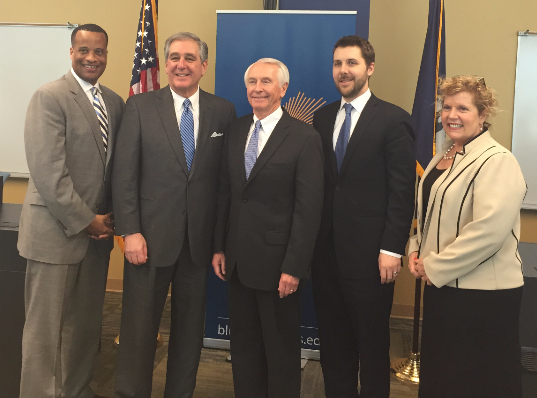Success story: Protecting and Sustaining the Walla Walla Watershed

With much of the west coast experiencing record droughts and even more dire predictions for the future, managing water and natural resources has become a critical priority for many communities. While there are many short-term measures that are being taken to cope with the shortage of rain and dwindling of reservoirs, there are some who recognize the need for longer term solutions. Walla Walla, Washington has been working on this issue since the late 90s. To address challenges and advance solutions, organizations in the Walla Walla Valley came together to create the William A. Grant Walla Water & Environmental Center (WEC) at Walla Walla Community College as a nexus for the region’s interests, talent and resources dedicated to water management, education and research. The Water & Environmental Center was designed as a space where education, collaboration and partnership would play a key role in addressing issues essential to the sustainability of eastern Washington’s overall economy. By combining research and development that leads to innovative new ideas, while also providing hands-on education to train new workers, the Center offers a place to both generate environmental solutions and spur economic growth that results in well-paid jobs.
Opened in 2007, the initial LEED Silver facility included offices and meeting rooms. In its first year, the Center hosted more than 200 meetings, events and conferences on water, sustainability, and environmental issues, which led to requests for additional space. In 2010, Walla Walla Community College received a $3 million grant from EDA to help expand the facility, adding an aquatic research and propagation laboratory, specimen/biology laboratory, water quality laboratory, hydrology laboratory, classrooms and additional office space. This addition helped earn the facility a LEED gold certification.
Highlight: Guest Column: Green Infrastructure = Smart Infrastructure
 |
By Mia Colson, National Association of Regional Councils
As population growth continues to expand in suburban and urban areas, many neighborhoods are seeing trees and shrubs replaced by sidewalks and streets. Increased development leaves less space available for natural landscape. Inadequate vegetation reaps negative consequences for community livability. Stormwater runoff, reduced air and water quality, and infrastructure costs all become major issues when plants and trees are taken out of the picture. Green infrastructure and urban forestry projects provide cost-effective mechanisms for local governments to reduce stormwater runoff, meet environmental goals, and improve community livability.
Although most people think about green infrastructure for its water quality benefits, green infrastructure has numerous economic benefits, including:
- Increased Property Values: Green spaces can increase residential home values. A study in Philadelphia found that when vacant lots were retrofitted with rain gardens and other green infrastructure, surrounding home values increased by up to thirty percent.
- Reduced Infrastructure Costs: Public expenses for stormwater infrastructure are greatly reduced when relying on green infrastructure for stormwater management. Green techniques typically cost less than gray infrastructure in cities with a combined sewer system.
- Job Creation: Developing and maintaining green infrastructure creates new job opportunities.
- Energy Savings: The shade and insulation provided by green roofs, trees, and green spaces increases the energy efficiency of buildings and homes by reducing the need for heating and air conditioning.
- Recreational Opportunities: Parks and other green areas present additional recreational opportunities that contribute to better quality of life.
- Enhanced Livability: The aesthetic, health, and recreational benefits of green infrastructure improve community livability. Green infrastructure reduces inner-city crime and dampens noise pollution.
Spotlight: The Greening of Economic Development

There was a time where people who wanted to grow their own crops or buy an electric vehicle were on the fringes of society. That has all begun to change. Doing things in an environmentally friendly way has gone mainstream. Restaurants can charge top dollar for serving sustainable foods from local farms, and Tesla can charge $80,000 for an electric vehicle – and people are paying it. LEED certification for businesses and homes has become a sort of status symbol. People are rightly demanding more sustainable and eco-friendly options, and that change is reflected in economic development projects and priorities at the local and federal levels at every step along the way.
The city of Austin, Texas has an ambitious zero waste goal and has undertaken a number of projects in and around the city to meet it. In July 2014, EDA awarded the city of Austin a $1 million grant to help build infrastructure for the Austin [re] Manufacturing Hub, which will allow recyclables to be transformed into new products locally. Currently, many of the recyclable items collected in the city are sent overseas for manufacturing, which uses significant resources for transportation and provides job opportunities for other countries. By keeping these items in Austin, the [re]Manufacturing hub will help create jobs and investment from waste-based industry in the Central Texas region. In fact, the grantee estimates that more than 1,000 jobs will be created by recycling and reuse companies.


